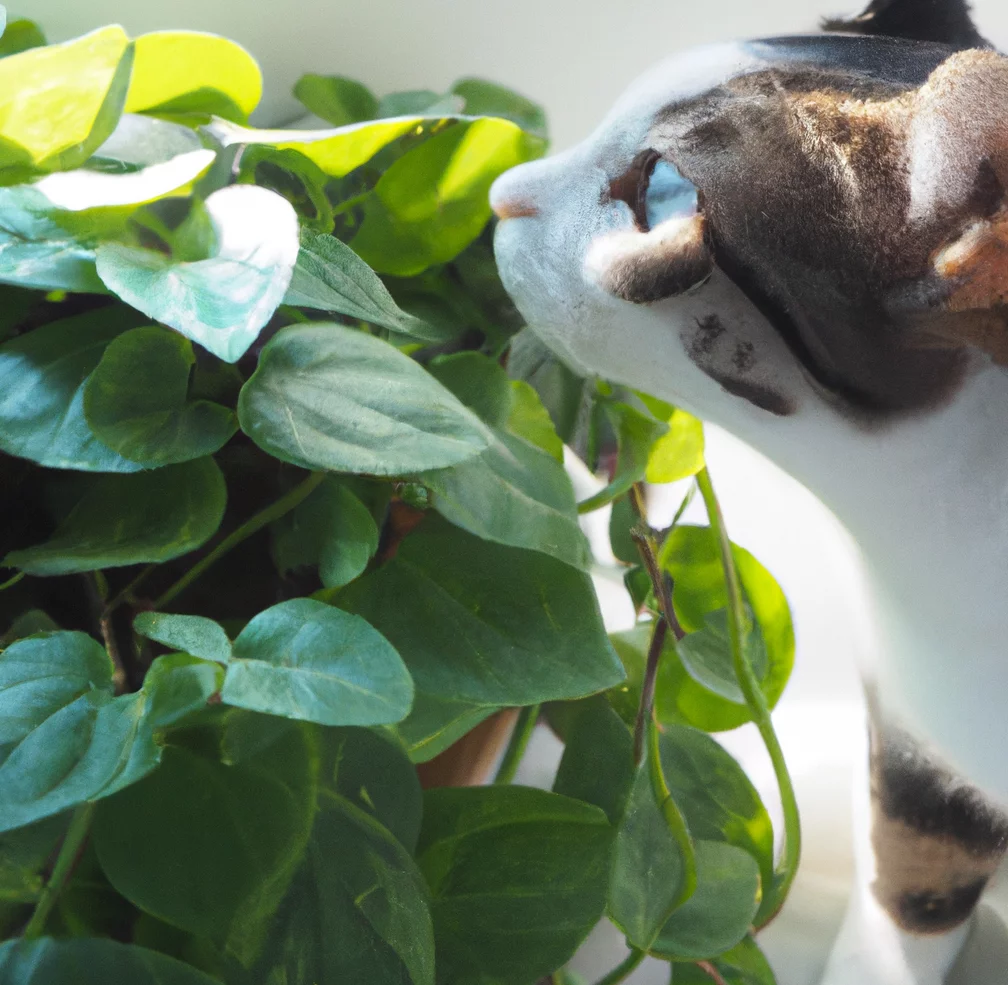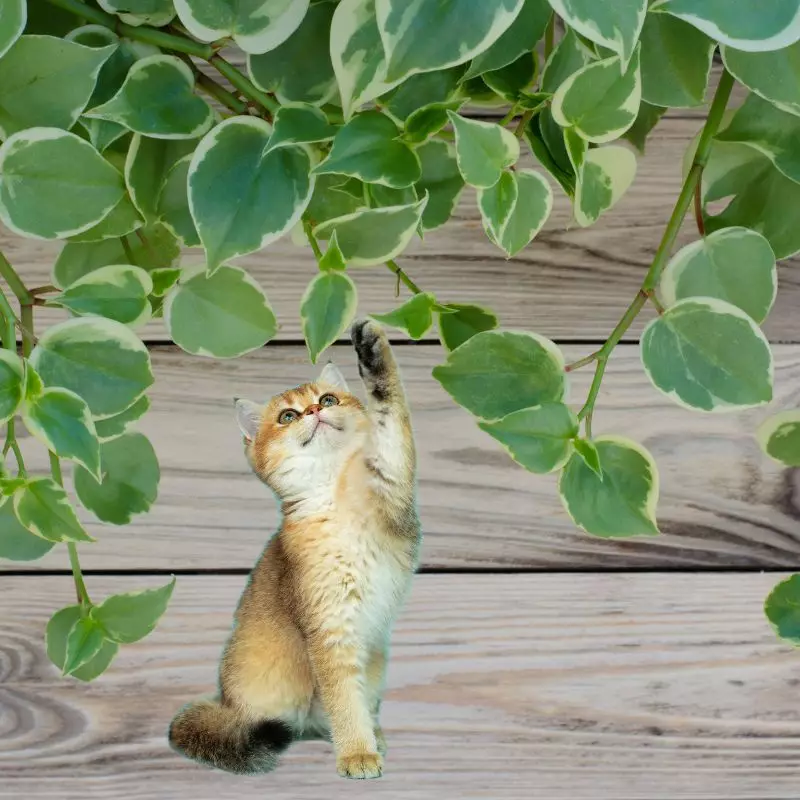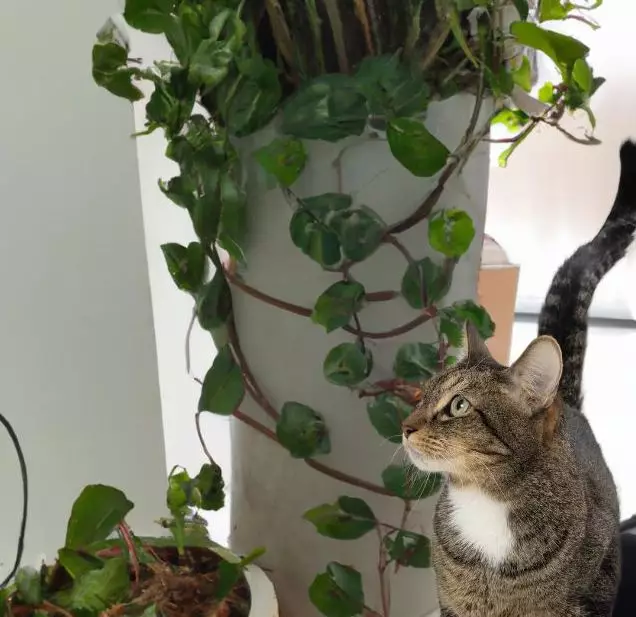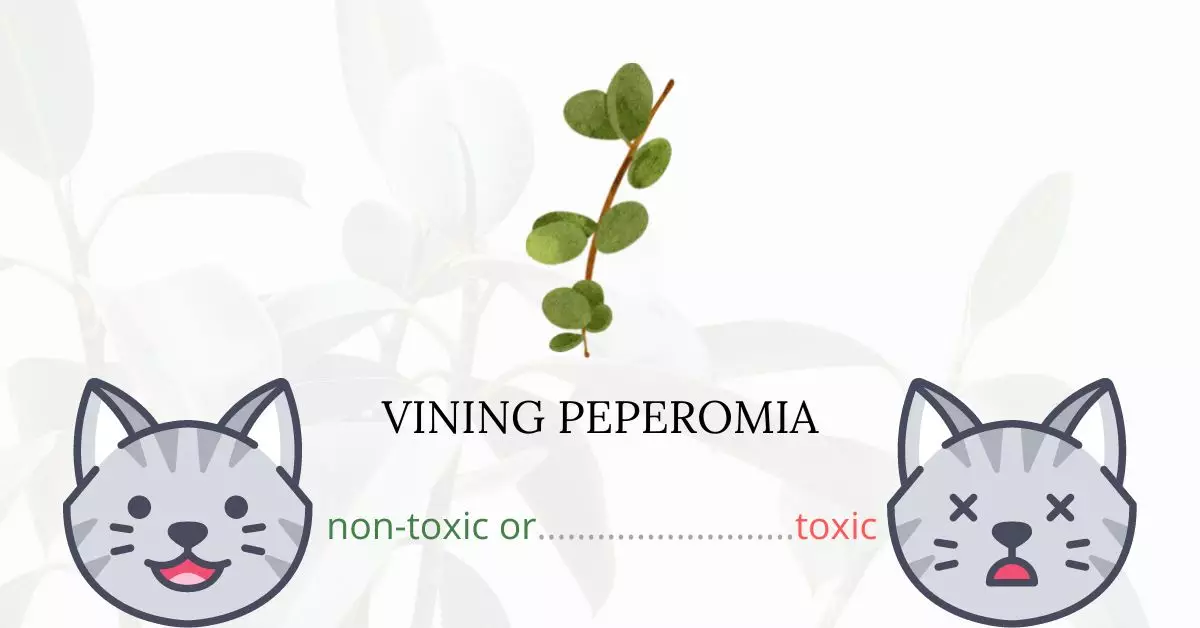No, vining peperomia is not toxic to cats. This plant, similar to other peperomia species, poses no harm to our feline companions and is considered safe to have within households that also harbor cats. In fact, the American Society for the Prevention of Cruelty to Animals (ASPCA) includes vining peperomia on their list of non-toxic plants.
This article was crafted in close collaboration with a team of experienced DVMs (doctors of veterinary medicine). Through their invaluable insights and expertise, we ensure the provision of accurate and up-to-date information on the potential risks, or lack thereof, associated with various plants and their effects on cats. Additionally, our assertions are backed by meticulous research from high-authority sources such as the ASPCA and PetMD.
While vining peperomia is non-toxic, it is important to note that this doesn’t necessarily mean cats should consume the plant as a regular part of their diet.
Can Cats Eat Vining Peperomia?

Curious cats who like to nibble on plants are likely to take a bite on your peperomia plants. It may not cause them harm since the plant is not toxic however, excessive consumption can lead to indigestion.
Cats who are suffering from indigestion may manifest signs of vomiting, abdominal pain, and diarrhea. Their bodies are trying to eliminate the plant particles out of their body because their stomachs are not capable of metabolizing them. Cats are protein-based eaters because they are carnivores thus, it is not really recommended to include plants in their diet.
If you use plant care products on your houseplants, you should be also aware that some of them contain hazardous chemicals that can be bad for your feline companions. If your cat has eaten or inhaled a portion of a contaminated plant, he or she may suffer from poisoning.
For safety, always check the product label of your plant care products before using them. It is better if you only use natural products for your plants.
What is Vining Peperomia?

Vining peperomia is a tropical South and Central American trailing plant with heart-shaped leaves. The genus peperomia serpens contains over 1000 different types of peperomia plants, but only about a hundred of them are cultivated as ornamental houseplants.
Peperomia has quickly become a well-accepted indoor plant worldwide due to its diversity, manageable size, and ease of cultivation. It grows like an epiphyte in nature, with its stems strewn with pointed heart-shaped leaves that dangle freely from the trees. Although there are varieties with assorted foliage in a combination of green and cream white, the cordate, shiny leaves are most often a pure fresh green color.
Because the leaves are densely strung on stems that can grow up to two feet long, the plant is frequently grown in hanging baskets.
Keeping Cats Away From Vining Peperomia

You can use deterrent sprays to stop cats from eating your plants. There are commercial sprays on the market that contain citronella oil, which cats detest. Additionally, you can create your own solution by mixing two teaspoons of citrus essential oil with water in a spray bottle. Spray near plants that your cat likes to chew on after giving the container a good shake.
Plants to Avoid For Your Cats
If you are a cat owner and unsure if the plants growing in your yard are harmful to your cats, check out this list of toxic plants for cats. You can also check our list of non-toxic plants for cats.





